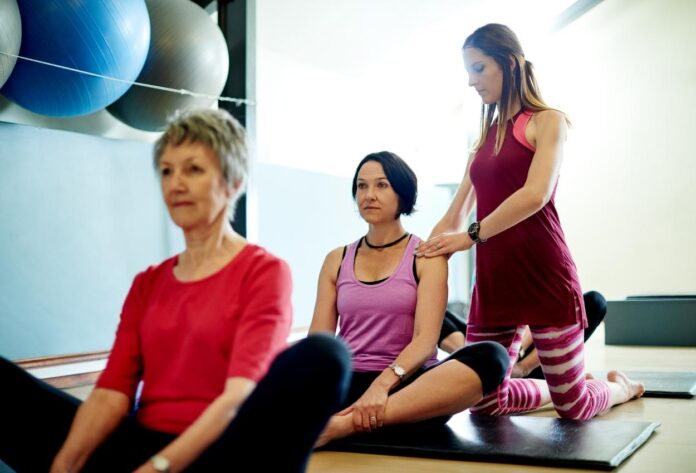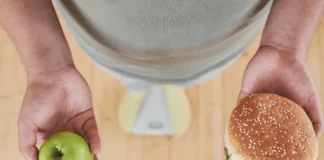Are you looking for a workout that will strengthen and limber your body while being fun? Are you looking for a form of exercise that will sharpen your mind? These are all legitimate questions, and we have a solution for you!

Joseph Pilates
Allow us to introduce you to Pilates, a form of exercise developed by German physical trainer Joseph Pilates in the early 20th century. It combines yoga, martial arts, and gymnastics.
Fun fact: The Pilates exercise method was initially intended to assist in the rehabilitation of injured soldiers during World War I. It was later introduced to dancers and athletes. In modern times, Pilates is practiced for its physical and mental health benefits.
Whether you are young or old, whether you’re a newbie to exercise or a pro, this form of exercise offers low-impact, full-body workouts that will improve your muscle tone, increase flexibility, and improve your posture. And that’s not all! There are a variety of methods, each with its own focus, you can choose from.
Let’s briefly review five of the more common methods of Pilates.
- Mat Pilates: This is the most common form of Pilates. You won’t need any equipment, just an exercise floor mat. Using your body weight, this form builds core strength, flexibility, and stability.

- Reformer Pilates: This method requires a specific piece of equipment (pictured below) called a “Reformer,” featuring a sliding carriage with springs and pulleys. It offers resistance training geared toward helping with balance, increasing strength, and increasing flexibility.

- Clinical Pilates is the only method of Pilates that requires a prescription from a physiotherapist. It is used specifically in rehabilitation centers to help with injuries or for managing chronic conditions. It focuses on improving movement to support recovery and prevent re-injury.
- Contemporary Pilates: This is a more recent incarnation of Pilates. It combines yoga, strength training, and dance. Practitioners of this form will often use stability balls, foam rollers, and resistance bands.
- Classical Pilates: This method strictly follows Joseph Pilates’s original teachings and traditional techniques and exercise sequence. It focuses on precise movements. For a more detailed explanation of the Pilates exercise sequence, check out this article published by Alo Moves.
Beneficial for All Age Groups
Because Pilates is such a low-impact exercise form, so it benefits all age groups.
- Children and Adolescents: Children and adolescents are like rubber bands. Starting a Pilates practice during these years is the perfect way to stay healthy throughout their lives due to the strong cores they have nurtured and better physical development.
Another benefit for children who practice Pilates is the promotion of mind-body awareness because it forces you to concentrate. The practice of focusing while practicing Pilates, will linger thereby improving focus while engaging in other, everyday life activities.
Pilates will also help younger practitioners maintain their natural flexibility.
- Adults

Pilates is especially good for adults and those with desk jobs because it strengthens the core while alleviating any back pain caused by poor posture. In addition, this practice helps improve flexibility and balance as well as helping to reduce stress with its mindful movements.
- Seniors

As we age, we lose flexibility and we can suffer from a loss of coordination causing accidental falls. Pilates will help improve your balance and reduce the risk of falling. In addition, our bones become brittle as we age. Practicing Pilates with weight-bearing equipment helps prevent osteoporosis by maintaining bone density. Seniors who practice low-impact Pilates exercises will improve joint flexibility.
- Pregnant Women

Pregnant women benefit from Pilates as it helps support prenatal health by strengthening the core and pelvic floor. This can help lessen discomfort both during pregnancy and labor.
- People with Chronic Ailments and/or Injuries: As mentioned before, Clinical Pilates is the only method requiring a prescription as it is used in rehab facilities to help the patient or client recover from injuries and certain chronic conditions. i.e. Arthritis, back pain. The focus in this practice is controlled movements that are safe to do and enhance mobility and strength without aggravating your condition.
With all the different methods one can choose to practice, you can be sure of the one constant in this mode of exercise; its adaptability. That is its beauty. This is a practice that will grow with you. As you move through the exercises, you will see the rewards. You’ll feel looser, stronger and become more deeply connected to your body.
The low impact of the exercises in Pilates makes it easy to incorporate into your life. Whether you choose mat-based exercises, which require nothing more than a mat, benefits abound! Reformer exercises with the use of added resistance – I mean, who won’t enjoy an exercise you can do while laying down and still reap benefits from it? – will take your practice to a higher level. Guided by skilled professionals, Clinical Pilates ensures concentration on specific concerns, and that they are safely addressed.
Give Pilates a shot! Whatever method you choose, whether you are a beginner or a regular practitioner, you will always find something new to explore and challenge yourself to achieve. Every time you take a session, you are making an investment in your overall physical and mental health simultaneously, laying down the groundwork for a healthier, stronger, happier life.
Pilates offers something for everyone!


